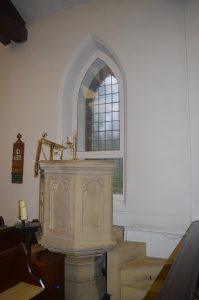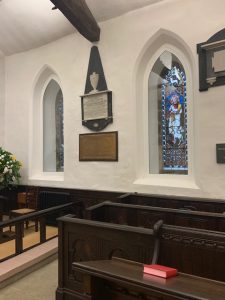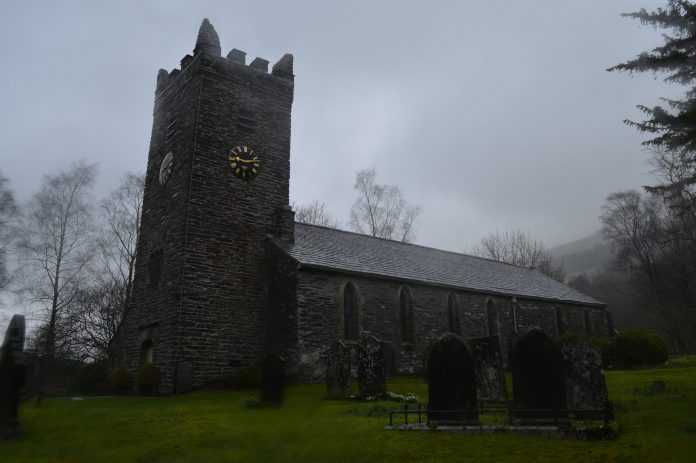Jesus Church in Troutbeck, a village in the Lake District, had secondary glazing installed to improve the thermal efficiency of its thirteen lancet-shaped stained-glass windows
The heating of the church works through an antiquated oil-fired system which takes a few hours to warm up the church. Once heated, a great deal of the energy is lost through the original windows. Wanting to resolve this and make the church more comfortable, the church committee decided to look at how best to insulate the building more efficiently.
Background
 The Pre-Raphaelite east window, installed in 1873, was designed by Edward Burne-Jones, with some of the detailing by Ford Madox Brown, and made by William Morris.
The Pre-Raphaelite east window, installed in 1873, was designed by Edward Burne-Jones, with some of the detailing by Ford Madox Brown, and made by William Morris.
The stone tracery is Perpendicular in style, which is the 3rd historic division of gothic architecture with an emphasis on vertical lines. It is made up of elaborate stonework into which five-lights sit with impressive stained-glass scenes. Historic England classified Jesus Church as Grade II* Listed to protect all its features of architectural interest.
Jesus Church’s treasurer, Mr Bradbury, has a background in civil engineering, so set about looking into secondary glazing for the windows. He understood a nearby church in the village of Ings, had Selectaglaze secondary glazing installed.
Following a visit there, to better envisage how it would look, he contacted Fenestral, partner of Selectaglaze for over 20 years, to explore treating the thirteen side windows.
Assessment
Fenestral concluded that this was going to be a complex job, a spatial exercise, to work out how to fit the secondary as well as the best position to install. It was decided that Series 41 side hung casements would be installed, to all full access for cleaning and maintenance, although would normally be kept locked shut with the flush lock and cover plate.
Addition of secondary glazing
 Generally, for thermal improvements, secondary glazing can be fitted up close to the windows, which initially the client wanted. However, because the reveals were deep and splayed, this would not be likely as the top of the arched reveal would prevent the top of the arch-shaped casement unit opening fully.
Generally, for thermal improvements, secondary glazing can be fitted up close to the windows, which initially the client wanted. However, because the reveals were deep and splayed, this would not be likely as the top of the arched reveal would prevent the top of the arch-shaped casement unit opening fully.
Special timber grounds were created with slightly enlarged gothic curved heads and installed by a highly skilled carpenter. A great deal of scribing had to be undertaken on-site to ensure the closest fit and that a square face was presented for the secondary glazing to be installed.
By fitting the units nearer to the face of the reveal, the primary windows are beautifully framed and the 13, Series 41 side hung casements have clearance to open.
The church is now more thermally effective with the addition of secondary glazing and they should start to see a reduction in heating costs, with less heat escaping and the troublesome draughts eliminated.

















